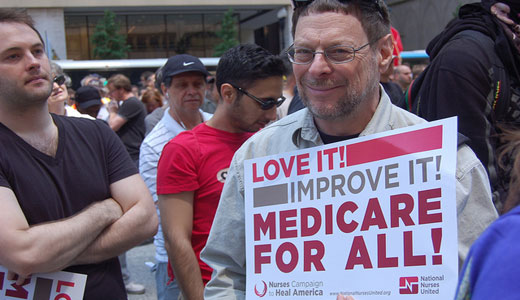
Cancer patients are twice as likely to file for bankruptcy as people without cancer, a study in Washington State has found.
Of almost 200,000 people with cancer, about 2 percent filed for bankruptcy protection after being diagnosed. Of those who were not diagnosed with cancer, 1 percent filed. That’s still a relatively small percent, but the researchers called it significant.
“Bankruptcy is such an extreme measure of financial distress, and we didn’t include the other forms of financial difficulties people encounter,” said Catherine Fedorenko, a study co-author and technical project coordinator at the Fred Hutchinson Cancer Research Center in Seattle.
“This paper shows how medical debt associated with a cancer diagnosis could be more likely to lead to a bankruptcy,” another co-author, Karma Kreizenbeck, a project director at the Hutchinson Institute for Cancer Outcomes Research. “But it could also mean people have to take second jobs, end up with lower credit scores or have to make other decisions.” Either way, she said, the financial problems brought on by astronomical costs of cancer treatment are likely to be stressful. That, of course, could adversely affect patients’ medical conditions.
A nationwide study published last October found that high financial stress is “an important risk factor” for worse long-term outcomes following a heart attack. The authors note “the prominent role that health care costs may play in creating financial stress, as 20 percent of Americans currently report medical debt.”
The Washington State study also found that cancer patients who filed for bankruptcy were more likely to be younger, female and nonwhite than cancer patients who didn’t file for bankruptcy. Younger cancer patients overall have up to five times higher bankruptcy rates than cancer patients age 65 or older, the study found. That difference, the researchers concluded “indicates that Medicare and Social Security may mitigate bankruptcy risk for the older group.” In other words, these safety net programs make a difference in keeping patients coping with life-threatening illness away from financial disaster.
“Illness and medical bills contribute to a large and increasing share of US bankruptcies,” earlier studies led by Dr. David Himmelstein of Harvard Medical School found. (The study authors also included Elizabeth Warren, then a law professor at Harvard, now U.S. senator from Massachusetts.)
The Harvard researchers did two studies, one in 2001 and a follow-up in 2007. Using identical definitions in 2001 and 2007, the share of bankruptcies attributable to medical problems rose by 49.6 percent.
In 2001, they found that medical problems contributed to at least 46.2 percent of all bankruptcies. By 2007, that rate had jumped to 62.1 percent. Nine in 10 of these people had medical debts over $5,000, or ten percent of pretax family income, the authors found. “The rest met criteria for medical bankruptcy because they had lost significant income due to illness or mortgaged a home to pay medical bills.”
Most of these “medical debtors” were well educated and had middle-class occupations. And three-quarters had health insurance.
Himmelstein is a prominent advocate of expanding Medicare to cover all patients regardless of age – “Medicare for all,” also known as “single-payer” health coverage.
Meanwhile, a new report by the Commonwealth Fund shows that the U.S. has by far the highest health care costs of 13 leading industrialized countries: Australia, Canada, Denmark, France, Germany, Japan, the Netherlands, New Zealand, Norway, Sweden, Switzerland, the United Kingdom, and the United States. And while the U.S. has the health medical care costs, the quality of health care in the U.S. is “not noticeably superior” to other countries with less expensive health care.
Why are U.S. costs so much higher? Experts agree that lack of government curbs on the highly profitable private health “industry,” and lack of comprehensive universal health coverage, are the basic reasons.
The Commonwealth Fund report notes that Japan, which also has private health care, holds costs down by “aggressively regulating health care prices.”
The report singles out high drug prices in the U.S. as a significant factor in overall U.S. health care costs. “U.S. prices for the 30 most-commonly prescribed drugs are one-third higher than in Canada and Germany, and more than double the prices in Australia, France, Netherlands, New Zealand, and the U.K.,” it says.
The exorbitantly high prices of cancer drugs in the U.S. are no doubt one reason for the financial stresses and bankruptcies among cancer patients. A group of prominent cancer specialists said recently: “In Europe and many developed countries, universal health coverage shields patients from the direct economic anxieties of illness. Not so in the United States where patients may pay an average of 20 percent of drug prices out-of-pocket (about $20-30,000 per year, a quarter to a third of an average household budget), and where medical illnesses and drug prices are the single most frequent cause of personal bankruptcies.”
Photo: National nurses’ rally, May 18, 2012. PW/Flickr

MOST POPULAR TODAY

Zionist organizations leading campaign to stop ceasefire resolutions in D.C. area


High Court essentially bans demonstrations, freedom of assembly in Deep South

Afghanistan’s socialist years: The promising future killed off by U.S. imperialism

Communist Karol Cariola elected president of Chile’s legislature






Comments